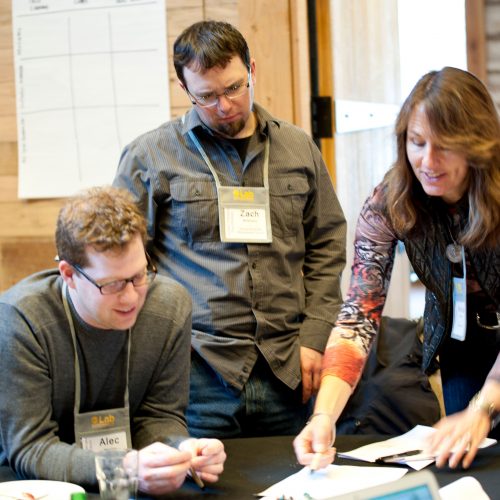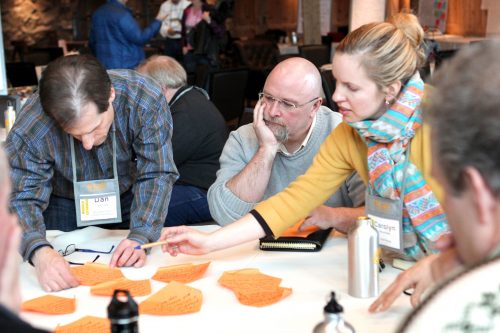
eLab Accelerator 2016
Electrifying New York City Transportation

Project Objective
Con Edison, the electric utility for greater New York City, seeks to develop an electrification strategy for local transportation that would result in a dramatically reduced carbon footprint.

Team Members
Jamie Brennan, Director Demonstration Projects, Con Edison
Josh Gould, Department Manager, Utility of the Future, Con Edison
Vignesh Gowrishankar, Associate Director, Energy and Transportation Program, Natural Resources Defense Council (NRDC)
Ari Kahn, Director of Business Development & Government Relations, Move Energy Systems

Project Description
Aligning with New York State’s carbon goals to reduce economy-wide carbon emissions by 40 percent by 2030, Con Edison, the electric utility for greater New York City, seeks to act as a catalyst to facilitate a dramatic reduction of the carbon footprint of local transportation through an electrification strategy. Unlike previous industry efforts focused on managing EV charging demand or deploying infrastructure, this project intends to develop a comprehensive strategy for transportation electrification and therefore would seek to address the entire value chain. That chain includes transportation OEMs, infrastructure vendors, electric utilities, fleets, state and municipal governments (including New York City), and the Public Service Commission. The comprehensive strategy must also align with other, related carbon reduction efforts, including Con Edison’s and NYSERDA’s energy efficiency programs and the State’s emerging large scale renewables policy. Con Edison plans to take the learnings from eLab Accelerator, and use them for designing a demonstration project under the auspices of New York State’s Reforming the Energy Vision (REV) process that would test the key hypotheses of the strategy developed at the Accelerator.

Progress Made to Date (pre-Accelerator)
Con Edison has engaged with a variety of industry stakeholders, including governmental bodies, to build awareness of and support for this effort. Con Edison is working with the Environmental Defense Fund (EDF) Climate Corps program, and has secured a Fellow to help advance this effort during summer 2016.

Project Background Information
On December 12, 2014 the State of New York’s Public Service Commission (NYSPSC) issued a Memorandum and Resolution on Demonstration Projects. That order describes ten guiding principles for REV demonstration projects. The document can be found here. Con Edison released a Request for Information (RFI) for a demonstration project focused on innovative business models for energy storage – a process it intends to follow for this demonstration project – and the RFI can be found here.

Post-Accelerator Outcomes
The Electric NYC team came to accelerator with the somewhat nebulous goal of developing a comprehensive strategy for vehicle electrification in New York City. The team left accelerator, instead, with a shared vision of an electric vehicle future in NYC, a clear set of objectives for Con Edison to help achieve this vision and a set of boundary conditions to focus Con Edison's upcoming vehicle electrification demonstration project. First, the team developed a shared vision of the future of electric transportation in NYC. In this vision of the future electric vehicle miles make up a high percentage of all passenger miles travelled in the city, ultimately improving the desirability and livability of the NYC. The team identified some key components necessary to achieve this vision: electric mobility is cheaper than alternatives, electric vehicle charging is ubiquitous, Con Edison has a sustainable revenue model, electric vehicle business models are scalable and mobility as a service enables vehicle electrification. Second, the team developed two clear objectives for Con Edison's involvement in electrifying New York City transportation. The objectives are to maximize electric passenger miles travelled by creating a sustainable long term business model for Con Edison. These two objectives are intended to reinforce and inform one another. Third, the team developed a set of requirements or boundary conditions for Con Edison's upcoming vehicle electrification demonstration project. The boundary conditions are: A to-be-determined number of electric passenger miles travelled achieved as a result of the demonstration project A path towards net positive cash flows for Con Edison (ideally in 5 years, but in no more than 10 years) The team believes these boundary conditions set the stage for both short and long term success.
